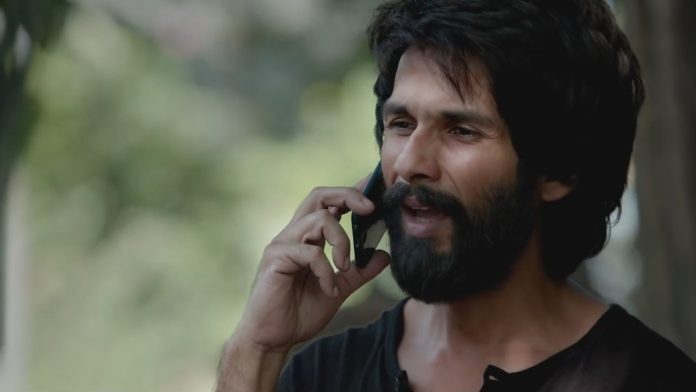The Weight Of Numbers
Competition is dealt with by asserting one’s strengths. The US leverages its technical superiority; France, its cultural pre-eminence; North Korea, its rogue reputation; Pakistan, its unflinching faith in terrorism; China, its ability to out-produce all others; and India…? India has many gifts but has rarely been able to exploit any one effectively. Culturally, it is matchless but it is low down on must-visit places; its reputation in IT is enviable but it has not thrown up a single IT monolith of the scale of Microsoft or Facebook… So, how does India expect to assert itself in this fast-changing world? By the sheer weight of its numbers. It is the second most populous country and is expected, within the next decade-and-a-half, to have the largest population, overtaking China. This is, perhaps, the route India has chosen, to seal its place at the top in the last few decades.
It is also, perhaps, the route Bollywood and its related industries will have to take, to dominate world cinema, leveraging quantity and not quality. Recently, it was declared that for the January-March 2019 period, Indian entertainment and live-streaming platforms like Hotstar, MX Player, JioTV, Sony-Liv were among the top 10 downloaded apps worldwide. Reportedly, 366 million downloads out of the two billion worldwide were of the Indian apps, in this three-month period. Apart from India, consumers in Pakistan, Sri Lanka, Saudi Arabia, Malaysia and the US, UK and Canada were the major patrons of the Indian entertainment apps. With growing proliferation of smart phones in India, it is fairly obvious that, in the coming decades, the number of consumers of Indian entertainment will go through the roof. This is not a promise or threat; it is the fact of the future.
Within the subcontinent and among NRIs proliferating abroad, Bollywood has an audience that won’t fail it, irrespective of the quality of entertainment it delivers. The music lineage and current output, TV reality song-and-dance shows, web series, film-based shows are all part of the same juggernaut that Bollywood (also other Indian regional film industries) has stitched together to keep the nation entertained. Granted that the quality is not a patch on what the Western world has on offer but the favourite son doesn’t have to be particularly gifted to be loved. And Bollywood is undoubtedly the favourite son, much more than even cricket. With its billion-plus adherents, and some more beyond the borders, Indian cinema and particularly Bollywood has tons going for it. If Hollywood studios have set up shop here and are buying up Indian companies like truckers gorging on batata vadas at the Karjat pit stop, it is because they see value in the acquisitions. Bollywood, irrespective of what it puts out, can’t fail in the long run. In fact, what is seen today is only the tip of the iceberg. In another decade or so, Bollywood and its related industries will see exponential growth. This will be so not only because of India’s growing population and its increasing prosperity but it will also come about because India’s culture is spreading far and wide. Bollywood has not been able to peddle it effectively but that will soon change. The Indian film industries may be left with no choice but to dig into the universality of India’s culture to enchant the world.
As it is, it is generally believed that India witnesses among the maximum foot falls in cinemas though box-office collections don’t reflect it because of low admission rates. However, in the foreseeable future, cinema ticket rates are bound to move upwards, just like prices of brinjal and land. In a couple of decades, when admission rates are closer to what they are in the rest of the world, India could well rival China in box-office collections worldwide. Bollywood films, now struggling to get past the Rs. 100-crore mark to qualify as hits, would float around in the region of over Rs. 1,000 crore for an average performer. The country, by virtue of its population and increased purchasing power, will make it happen, despite the often indifferent quality of its films.
This is visible in the growing demand of Indian entertainment live-streaming services. Digitally, India is possibly the fastest one climbing the ladder worldwide. The numbers that even a single service provider, Jio, has notched up in a single year rivals the population of the US! If India is on the cusp of exponential growth, Bollywood is surely the centre forward that will be among the ones leading the way.
The charm of Bollywood is unmistakable when travelling abroad. Bollywood brings a smile to faces of foreigners without much prompting, especially the younger generations which have been exposed to the bhangra beats and cover versions of Indian songs, in night clubs. Recently, when an Indian kid participated in some American dance reality shows, shaking to a chalu Govinda number, audience just came alive, swaying with him, their hands and arms doing the ‘change-the-bulb’ movement. It required no prodding; Bollywood numbers and its percussion beats induce that effortlessly.
That said, the future also depends on the present. Bollywood needs to put in the effort to make things happen. For instance, live-streaming sites have thrown up an incredible opportunity with their imperishable appetite for content. India, as the largest film producing country, needs to push itself to the forefront and supply shows and programmes in large numbers. India has the inherent advantage of being fluent in English, and catering to the rest of the world is that much simpler. While quality is always important, and Indian content providers would need to work harder on it, delivering quantity also has a place in programming. The sheer need to fill up half-hour slots in 90-odd countries creates immense opportunities. As it is, Indian web series are finding audiences the world over; it’s just the number of programmes that needs to increase.
Bollywood has huge opportunities waiting for it in the near future. But the industry needs to sketch out a road map to make the most of it. It may not seem easy but it’s also not as tough as it appears. It has been said of India since decades, that the world is waiting for it to move to the top but the country has always been reticent to do so. The same should not be said of Bollywood. Will it step up, please?
Nothing Succeeds Like Success
Film stars are so much luckier than cricketers. Just this week, a class player like Ambati Rayadu announced his retirement from all formats because he was, unfairly, overlooked when injuries created vacancies in the World Cup team. Two junior players got selected over him. That snub made him give up on cricket.
On the other hand, Shahid Kapoor, despite a long list of films that didn’t work over a few years, continued getting films and work and opportunities. As is often the case, one film has finally clicked and all has been forgiven; he’s an A-lister all over again. In any other profession, Shahid, with his track record of the last few years (save Padmaavat for which he didn’t get much credit), would have been dumped down the chute thrice over. Not in films, though. Here, it takes a long time for an actor to become a star, and an equally long time to fade away. In between are multiple opportunities to sparkle again.
Bollywood makes it difficult actually for a star to fade away. This is, perhaps, the reason that Bollywood stars have an enviable longevity. Imagine, the three Khans have been around for almost 30 years and they are still at the top; not just that, even Ajay Devgan, Akshay Kumar, Hrithik Roshan have been around like forever, and they are still in a position to turn down offers. And this is so despite new guys like Ranveer Singh and Varun Dhawan coming in and sealing their own spots. Of course, life is not all hunky dory for the girls. None of the lead actresses, who made early pairs with the Khans, is still around, except in mother’s roles!
Shahid Kapoor’s return with Kabir Singh is most welcome. However, it is hoped that his choice of films would be less eclectic and he would now film some regular romantic films too. He’s such a fabulous dancer but not much has been seen of that in recent years. For long life as a star and a happier career path, raise a toast to Shahid.
Academy Honours
The Academy of Motion Picture Arts and Sciences has done itself proud to have invited into its fold six Indian film personalities – Zoya Akhtar, Anurag Kashyap, Anupam Kher, Ritesh Batra, and visual effects experts Sherry Bharda and Srinivas Mohan – among 842 celebrities worldwide. It’s a special honour for the Indians too; they shall have a vote at the Oscars, selecting the award-deserving films for the Academy’s annual show. It is also an acknowledgment of each one’s cinematic career, that it has been glittering enough to warrant such an honour. Of course, it is also a huge plus on a non-Hollywood film personality’s CV.
However, apart from the 5-star recognition on the business card, does being a member of the Academy mean much? It’s a badge that would get them into places denied to ordinary filmmakers, but in real terms, what do they get? The privilege to vote so, perhaps, lots of goodies from Hollywood production studios that launch massive campaigns to win Oscars for their films; an invitation to attend the annual show but, most importantly, entry into a select group of filmmakers who have attained the zenith in their own spheres. That is truly special.
The Renunciation
Young actress, just a few films old, Zaira Wasim announced her decision to quit the film industry, saying that it affected her relationship with her faith, her religion and her God. She has accordingly severed ties with films to cement closer bonds with the last three. This has raised some consternation in the industry, many looking upon her decision as an indictment of the other Muslims (and not just the girls) working in films. Some have called her out, saying, if she had to quit, she should have just gone rather than advertise her ‘regressive’ views and adversely influence her fans. A few, actually just a handful, have hailed her indictment of a career in the film industry, calling upon other girls (Hindu and Muslim) to similarly quit their careers.
All of it seems so over the top. A young girl has taken a decision to quit films and do whatever else she wishes to, which is fine. She might lead a normal life, get married in her faith, have children and raise them in her faith and eventually go the way all of us will. Or she might regret her decision and want to get back to films. How does it even matter? The fact is, the decision she has taken may be life-changing for her; for the industry, it’s next to nothing. It means zilch. Three months after the release of her upcoming film, she will be forgotten. Then it will be just her life and what she wants to make of it.
Some have said that she has proved to be a flawed role model, which is rather silly. Whether she is answering the call of her heart or soul, or is being pressurised by the society she lives in, to quit films, is known only to her, and each person has a right to decide his/her path. Why should it concern anyone, especially in an industry where thousands of young people are waiting to break down the doors and get into the film industry and become stars, the way Zaira did. Now that she has chosen, it’s better to respect her decision and let her be.
































